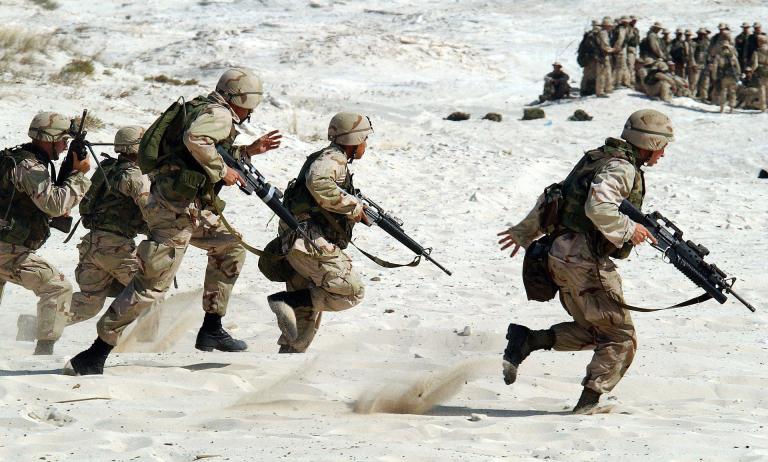 Sipping my morning latte, my screens are filled with images of war. People fleeing Ukraine. Children being bombed. Elderly people displaced and most disturbing, a mass grave in which bodies are dumped. It’s all so distressing. Innocent people suffer. One day, people were going to the grocery store just like you and I, and the next, they are invaded and fearful for their lives.
Sipping my morning latte, my screens are filled with images of war. People fleeing Ukraine. Children being bombed. Elderly people displaced and most disturbing, a mass grave in which bodies are dumped. It’s all so distressing. Innocent people suffer. One day, people were going to the grocery store just like you and I, and the next, they are invaded and fearful for their lives.
Social media are flooded with cries for help. TikTok videos are tagged with #ukrainewar and more. Never in history has war been delivered to all our devices in such graphic ways. It forces us to pay attention, to not ignore what is happening thousands of miles away.
But how does one reconcile watching war and going about daily life in America? How do you process such disturbing images?
For years we have researched how watching trauma influences mental health. The more you watch, the more stress and symptoms of post-traumatic stress (PTSD) are possible. And data show that even physical health problems can develop years later.
Believe it or not, trauma can be experienced just by watching it. And in today’s world, graphic images of violence and trauma are no longer screened at an editor’s desk. People post. Millions of viewers follow. Everything is available in the world of social media. And misinformation spreads like wildfire, too often making things sound worse than they truly are.
Media violence has been shown to negatively affect physical and mental health. We know from neuroscience that viewing violence activates parts of the brain responsible for regulating emotions, including aggression. Multiple studies have determined that viewing violence puts people at risk for aggression, anger, and a loss of empathy. The more violence we see, the more that violence is recorded in our head and then we accept more open attitudes about aggression. Think of it like a camera flash each time you see violent images. Those images are stored. Your body is aroused and memory is imbedded in your brain. More emotion, stronger the memories linger behind.
And news media know we pay attention to emotionally charged material. Ratings soar. The more we attend to emotionally charged content, we somehow think we are protecting our own survival. So, more stories cover the most graphic and horrific events. And, just to state the obvious, media outlets do not monitor your mental health!
If you are prone to anxiety, you may seek out crisis coverage which only fuels more distress. Filling your brain with so many graphic and disturbing images will increase anxiety. However, if you have a loved one in Ukraine or ties to people you know, following the war can make you feel less disorientated and somehow in the moment.
The bottom line is that watching war and violent media images impact us physically and emotionally. If you find yourself having nightmares, intrusive thoughts, anxious feelings or problems with sleep, it’s time to make a few changes.
What to do:
- Limit your exposure. To know if you need to do this, pay attention to how you feel when watching violent images of war or other crises. If you are anxious or feeling stressed, stop watching. Think about the impact this is having on you. If you find yourself feeling increased stress going about your daily routine, cut down your viewing. Minute-to-minute updates are not for you.
- Find other ways to stay engaged. Donate money to organizations helping war victims; support those in your community who have ties to relatives and friends in the war zone; and stand up for those who need a voice. Taking action is proactive and brings a sense of purpose. Once you understand the conflict of war, engage in proactive ways to help the victims.
- Monitor your children. Children in elementary school should not be watching graphic images of war. They are too frightening and children don’t have the mental capacity to process those images. They can easily develop fears that are out of proportion to their lives. With older children, watch the news with them and discuss what is being seen, your values and how to response to such horror. Discuss questions like, “How do we help those in need? What should our response be?” Certainly this can lead to fruitful conversations about suffering and faith.
- Get active in other ways. Exercise, go outdoors for a walk, take a class and give yourself a mental health break from the doom and gloom available 24-7. Physical activity is a stress reducer and activates mood enhancing hormones.
- Pray. Direct your energy to prayer. Take your compassion for the hurting directly to God. Prayer makes a difference. People report feeling the impact of prayer. They need and appreciate our prayers. God can move powerfully in the worst of circumstances.
- Encourage each other in the faith. We hear more and more stories of miraculous interventions in Ukraine. Reports of how God protected a person or used someone divinely to help rescue others. Add these faith building stories to your life. Keep hope alive. Hope in God. Hope keeps us going. It reduces stress and focuses our mind on what is possible.
- Discuss suffering and evil in the world from a faith perspective. You will not hear these conversations on most media outlets. However, those of the Christian faith understand the spiritual dimension of evil and how it will play its hand in this world. Now is the time to talk about such things with your family and children. What is the Christian response to evil? How to we stay compassionate despite evil dictators? Why do good people suffer? We need to provide answers from a biblical perspective.
Overall, consider how much stress and uncertainty continue to invade our lives–shootings, a pandemic, racial unrest and war. Over time, these stresses can add up if you are not mindful of how you manage these difficult issues. Your faith is an anchor. It provides respite in a time of storm. Don’t forget to activate faith in order to reduce the stress.


